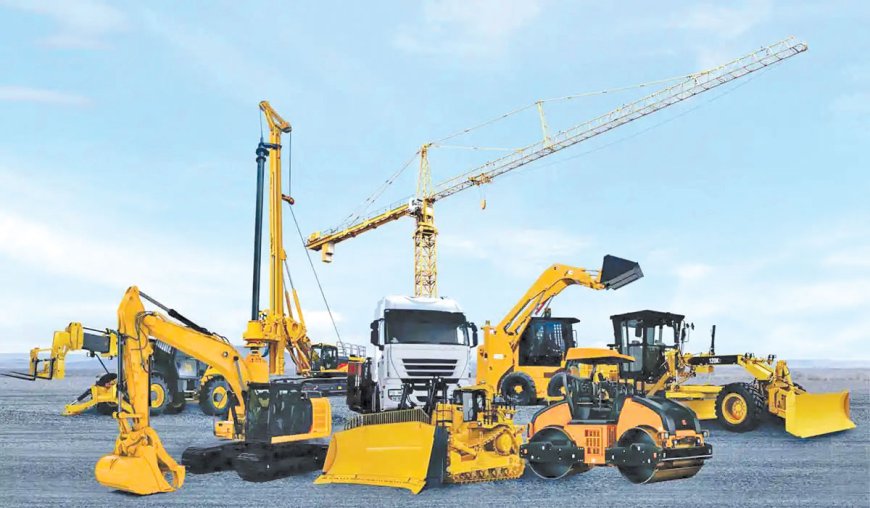The Indian construction equipment rental sector is increasingly integrating automation, IOT, and artificial intelligence technologies.

Satin Sachdeva
Founder & Secretary General, Construction Equipment Rental Association
What are the current trends you observe in the construction/infrastructure equipment rental market?
Growing Investment in Indian Infrastructure: The Indian government is heavily investing in infrastructure projects. These projects are driving demand for construction equipment rentals as companies seek cost-effective solutions to meet project requirements without the high upfront costs of purchasing equipment
Rising Sales of New vs. Used Equipment: The market is seeing an upward sentiment in the purchase of new construction equipment as opposed to used machinery. New equipment, which boasts advanced features, better efficiency, and longer operational life, is becoming more attractive to rental companies aiming to offer reliable, high-performance construction equipment with low maintenance and breakdowns .There is a big market demand for new equipment due to more awareness and easy supply from rental companies .There is a significant demand for specific types of new equipment, such as hydraulic and crawler cranes, piling rigs, vibro hammers, and shotcrete machines. These are crucial for large scale infrastructure projects and are frequently updated with models that enhance performance and safety
Growth in Automation, IoT, and AI Adoption: The Indian construction equipment rental sector is increasingly integrating automation, IOT, and artificial intelligence technologies. These advancements are improving overall operational efficiency, enabling preventive maintenance, and optimizing fleet management. Awareness and implementation of these technologies are on the rise amongst rental companies as the volume and numbers of every rental company has increased in the last 5 years. ERP and CRM applications too rise in this phase.
Improved Financing and Credit Terms: Easier financing options and extended credit terms from Original Equipment Manufacturers (OEMs) specially chinese OEM and manufacturers are boosting the sales of new equipment. These favorable financing conditions make it more feasible for rental companies to invest in high-cost machinery
Increasing Demand for Higher Capacity Machines: There is a noticeable trend towards higher capacity machines, which are essential for extensive infrastructure projects requiring robust and powerful high capacity equipment. Rental companies are expanding their inventories with such high-capacity machinery to meet growing demand and manage larger, more complex projects
Increased Demand for Operator / Technician Training: Alongside equipment rentals, there is growing demand for skilled operators. Rental companies now understand the value of skilled operators to ensure that operators are proficient in using advanced machinery, which helps in reducing downtime and improving project efficiency.

What are the primary challenges faced by rental companies?
Fragmented Market and Pricing Factors: The Indian construction equipment rental market is highly fragmented, with many small and medium-sized companies competing alongside larger, established firms. This fragmentation leads to inconsistent service quality and pricing. The intense competition often results in companies undercutting each other to win contracts, which erodes profit margins and makes it difficult to invest in new equipment and technologies.
Delay in Payment Recoveries: Payment delays from clients can cause cash flow issues, making it challenging for rental companies to manage operational expenses and invest in new equipment and technologies. Immediate attention is required to address this critical issue, and all industry associations should work together harmoniously. Effective dispute resolution mechanisms can foster trust and stability in the industry. Raising awareness about the importance of prompt payments and advocating for fair payment terms can mitigate cash flow challenges and sustain long-term growth.
Project Delays and Cancellations: Infrastructure projects can experience delays or cancellations due to funding issues, regulatory hurdles, political instability, and other challenges. These uncertainties can lead to sudden drops in equipment demand, resulting in significant losses for rental companies. Idle equipment during project delays creates financial strain as contractors often delay or postpone payments, potentially leading to bad debt. Rental companies should structure agreements to address potential delays, including flexible payment terms, penalties for late payments, or rental continuation fees. Conducting thorough credit checks and risk assessments of contractors before agreements ensures their reliability and financial stability.
Seasonal Variations: Construction activity in India is highly seasonal, with peak periods during the dry season and slow periods during the monsoon. Rental companies must manage their fleets and finances to accommodate these seasonal fluctuations. Adopting an 8-9 month working calculation instead of a 12-month calculation acknowledges seasonal fluctuations and downtime. This approach helps companies better manage resources, align expectations, and avoid overestimating potential revenue.
Brand Recognition and Trust: Smaller and newer rental companies may struggle to build brand recognition and trust compared to well-established players. Customers often prefer reputable companies with proven track records. The lack of entry barriers and regulation can lead to unhealthy practices and safety issues due to insufficient knowledge. Newer companies should emphasize quality service and customer satisfaction while investing in certifications and training to ensure safety and compliance. Building strategic partnerships and leveraging online marketing can enhance visibility and credibility.
Access to High Capital: Larger companies typically have better access to capital, allowing them to invest in the latest equipment and technologies. Smaller companies may find it challenging to secure financing from banks and NBFCs to expand their fleets and adopt new technologies. This financial limitation can hinder their ability to compete effectively. Larger companies benefit from economies of scale, reducing operational costs and offering more competitive pricing. Smaller firms should focus on niche markets, exceptional customer service, and innovative solutions to carve out their market share.
Service Differentiation: Differentiating services in a competitive market can be difficult. Companies need to offer value-added services, such as operator training, maintenance, and 24/7 customer support, to stand out. Providing flexible rental terms and customized solutions tailored to specific customer needs can enhance their appeal. Leveraging technology for real-time tracking and management of equipment can improve efficiency and customer satisfaction. Building strong relationships with customers through consistent communication and reliable service further establishes trust and loyalty.
Uneven Tax Structure Nationwide: The existence of an inconsistent tax structure among states presents additional hurdles. A uniform tax structure nationwide, aspiring towards the principle of “One Country, One Tax,” is advocated. Varying tax structures and regulations across states lead to significant confusion and increased administrative costs for businesses operating in multiple states. A standardized tax framework would streamline operations, reduce paperwork, and create a more predictable business environment, enhancing economic efficiency and promoting fair competition across the country.
Unskilled Labor and Lack of Training: Addressing the shortage of skilled labor and the need for comprehensive training programs is imperative for the industry’s growth and sustainability. Investing in vocational training initiatives and apprenticeship programs can bridge this gap and ensure a competent workforce. Collaborations with educational institutions and industry associations can facilitate the development of tailored training courses to meet the specific needs of the construction equipment rental sector. Organizations like the International Powered Access Federation (IPAF) and the International Energy Skills Competence (IESC) are working closely with OEMs to support skilling initiatives, but more training centers are needed across India.








